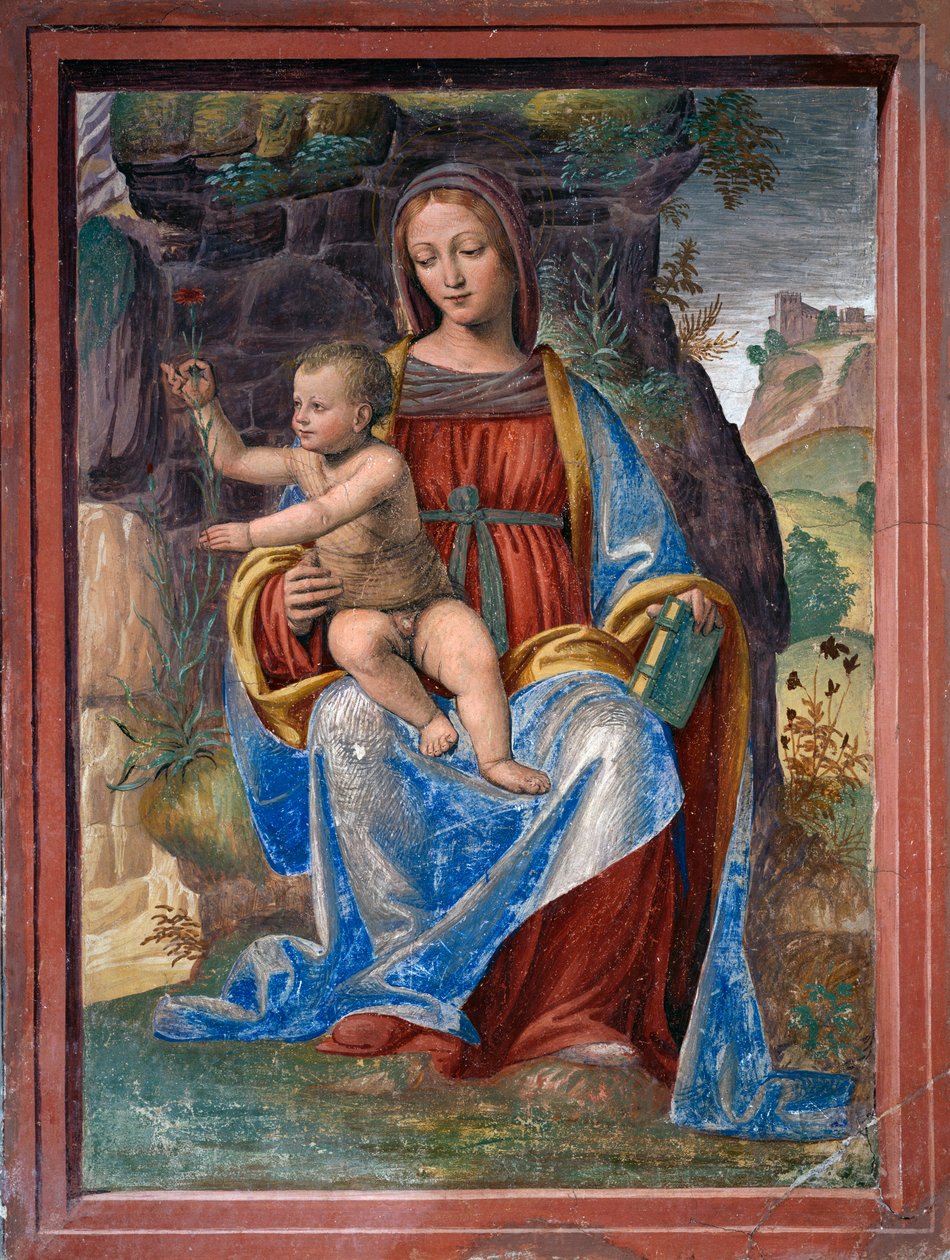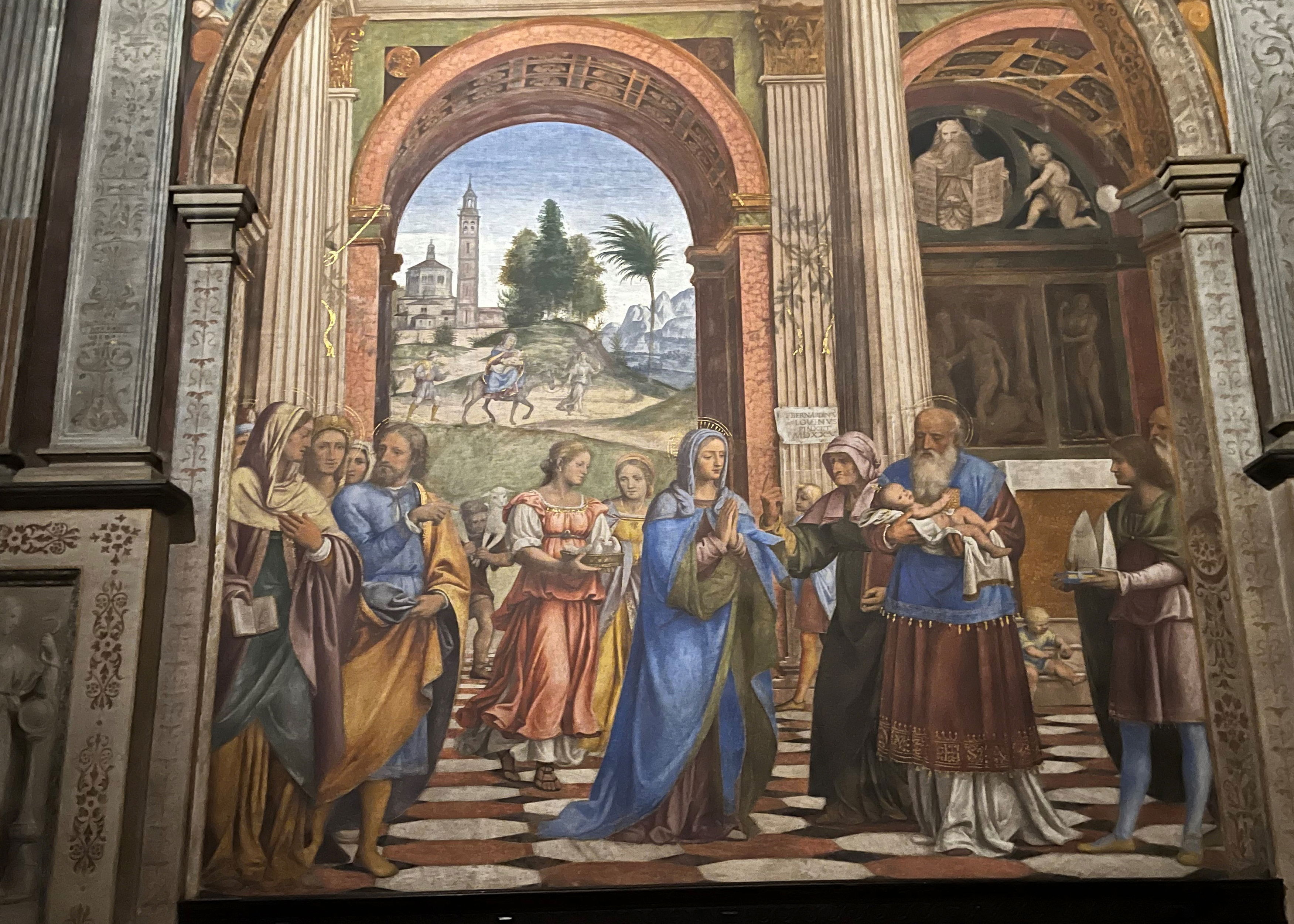
Have you ever taken a moment to consider the remarkable artists of the **Renaissance** period who significantly influenced the trajectory of art history? Among these luminaries, one name that frequently remains in the shadows is that of **Bernardino Luini**. Born circa **1485** in the vibrant city of Milan, Luini emerged as a master painter whose exquisite works continue to be revered and appreciated in contemporary times. His artistic journey is a fascinating exploration of creativity, inspiration, and technique. In this discussion, we will delve into the life of Bernardino Luini, examining the various influences that shaped his artistic vision, as well as the masterpieces that have come to define his enduring legacy in the world of art. Through an appreciation of his contributions, we can gain a deeper understanding of the rich tapestry of the Renaissance and the artists who helped to weave it.
Who Was Bernardino Luini?

Bernardino Luini was a prominent **Lombard painter** whose artistic career thrived during the vibrant period of the **Renaissance**. While details about his personal life remain largely elusive, the significance of his contributions to the art world is undeniable. His distinctive style often draws comparisons to that of the legendary **Leonardo da Vinci**, highlighting the rich and dynamic artistic milieu of **Milan** in which he worked.
Early Life and Influences
The specifics of Luini’s early life are shrouded in mystery, leaving art historians with limited information about his formative years. However, his first recognized work, a **fresco** depicting the “**Madonna and Child**,” created in **1512**, serves as a testament to his burgeoning talent. This notable piece was commissioned for the **Cistercian monastery of Chiaravalle**, located near Milan, and it clearly demonstrates his early stylistic influences, particularly from **Bergognone**, a contemporary Lombard painter known for his unique approach.
Artistic Influences
Throughout his artistic journey, Luini drew inspiration from a variety of masters, including **Bramantino**, **Bernardino Zenale**, and most significantly, **Leonardo da Vinci**. The influence of Leonardo is particularly pronounced in works such as Luini’s **Holy Family**, where one can observe striking similarities in facial types and compositional techniques. This connection not only underscores Luini’s ability to absorb and reinterpret the styles of his predecessors but also reflects the broader artistic currents that characterized the Renaissance in Milan.
Luini’s Notable Works

Luini’s artistic portfolio is notably diverse, featuring an impressive array of **religious subjects** and **mythological themes** that reflect the rich cultural tapestry of the Renaissance period. Among his most significant contributions are his frescoes, many of which have unfortunately been dispersed over time, yet they continue to be celebrated for their artistic merit. Let’s delve deeper into some of his most renowned works that exemplify his talent and thematic focus.
### The Story of Europa
One of Luini’s most acclaimed frescoes is the **Story of Europa**, which he painted around **1520**. This captivating piece is currently housed in **Berlin** and vividly depicts the mythological narrative of Europa’s abduction by Zeus, the king of the gods. The fresco is characterized by its vibrant colors and dynamic composition, which together create a visually striking representation that stands out as a hallmark of Renaissance artistry.
### The Story of Cephalus and Procris
Another exceptional fresco by Luini is the **Story of Cephalus and Procris**, also completed around **1520**. This artwork is now part of the collection at the **National Gallery of Art** in Washington, D.C. It poignantly illustrates the tragic love story between the characters Cephalus and Procris, showcasing Luini’s remarkable ability to convey profound emotion and narrative depth through his artistic expression.
### Religious Themes in Luini’s Art
In addition to his mythological works, Luini is equally recognized for his exploration of **religious themes**. His depictions of the **Madonna** and **Child** are particularly esteemed, reflecting the deep spiritual devotion that characterized the era. These works not only highlight his technical skill but also his ability to evoke a sense of reverence and piety.
#### Frescoes from Villa Pelucca
Many of Luini’s frescoes, originally created for the **Villa Pelucca**, are now part of the esteemed collection at **Brera, Milan**. These works encompass a variety of **mythological subjects** as well as the **Story of Moses**, demonstrating Luini’s versatility and mastery in handling different themes and narratives. His ability to blend mythological and religious elements showcases the breadth of his artistic vision and the enduring impact of his work on the art world.
Luini’s Artistic Style

What distinguishes Luini from his peers in the art world? His distinctive artistic style is a remarkable fusion of traditional **Lombard** influences and the innovative techniques inspired by **Leonardo da Vinci**. This combination allows him to create works that are not only visually captivating but also rich in emotional depth. Luini’s masterful manipulation of color, light, and composition results in paintings that evoke a profound sense of feeling, resonating deeply with those who experience them.
### Color and Composition
Luini’s approach to color is particularly noteworthy. He skillfully utilizes a diverse palette that features both soft pastels and vibrant, bold hues, which work together to establish a sense of harmony throughout his pieces. His compositions are meticulously crafted, exhibiting a well-balanced arrangement that naturally guides the viewer’s gaze toward the focal points of each painting, enhancing the overall impact of his work.
#### Facial Expressions and Emotion
A defining characteristic of Luini’s artistry is his exceptional ability to portray **facial expressions** that communicate a wide range of emotions. Whether depicting the tranquil gaze of the **Madonna** or the profound sorrow of **Procris**, Luini’s characters possess a lifelike quality that invites viewers to engage with their narratives. This emotional connection is a testament to his skill as an artist, as he brings his subjects to life, allowing audiences to feel a genuine connection to their stories and experiences.
The Legacy of Bernardino Luini

So, what is Luini’s legacy? Despite being less known than some of his contemporaries, his work has left a lasting impact on the art world. His ability to blend **mythology** and **religion** with a unique artistic style has inspired countless artists.
Influence on Later Artists
Luini’s influence can be seen in the works of later artists who sought to emulate his style. His approach to **fresco painting** and his thematic choices have paved the way for future generations to explore similar subjects.
Preservation of His Works
Many of Luini’s works have been preserved and are displayed in various museums around the world. This preservation allows new audiences to appreciate his artistry and the rich history of the **Renaissance** period.

In conclusion, Bernardino Luini may not be a household name, but his contributions to the **Renaissance art** scene are invaluable. His ability to weave together **mythological** and **religious themes** with a unique style has left an indelible mark on the art world. So, the next time you come across a painting by Luini, take a moment to appreciate the depth and emotion that he brought to his canvas.
Table of Luini’s Notable Works

| Title | Year | Location | Theme |
|---|---|---|---|
| Madonna and Child | 1512 | Chiaravalle Monastery | Religious |
| Story of Europa | c. 1520 | Berlin | Mythological |
| Story of Cephalus and Procris | c. 1520 | National Gallery of Art, Washington, D.C. | Mythological |
| Story of Moses | c. 1520 | Brera, Milan | Religious |

